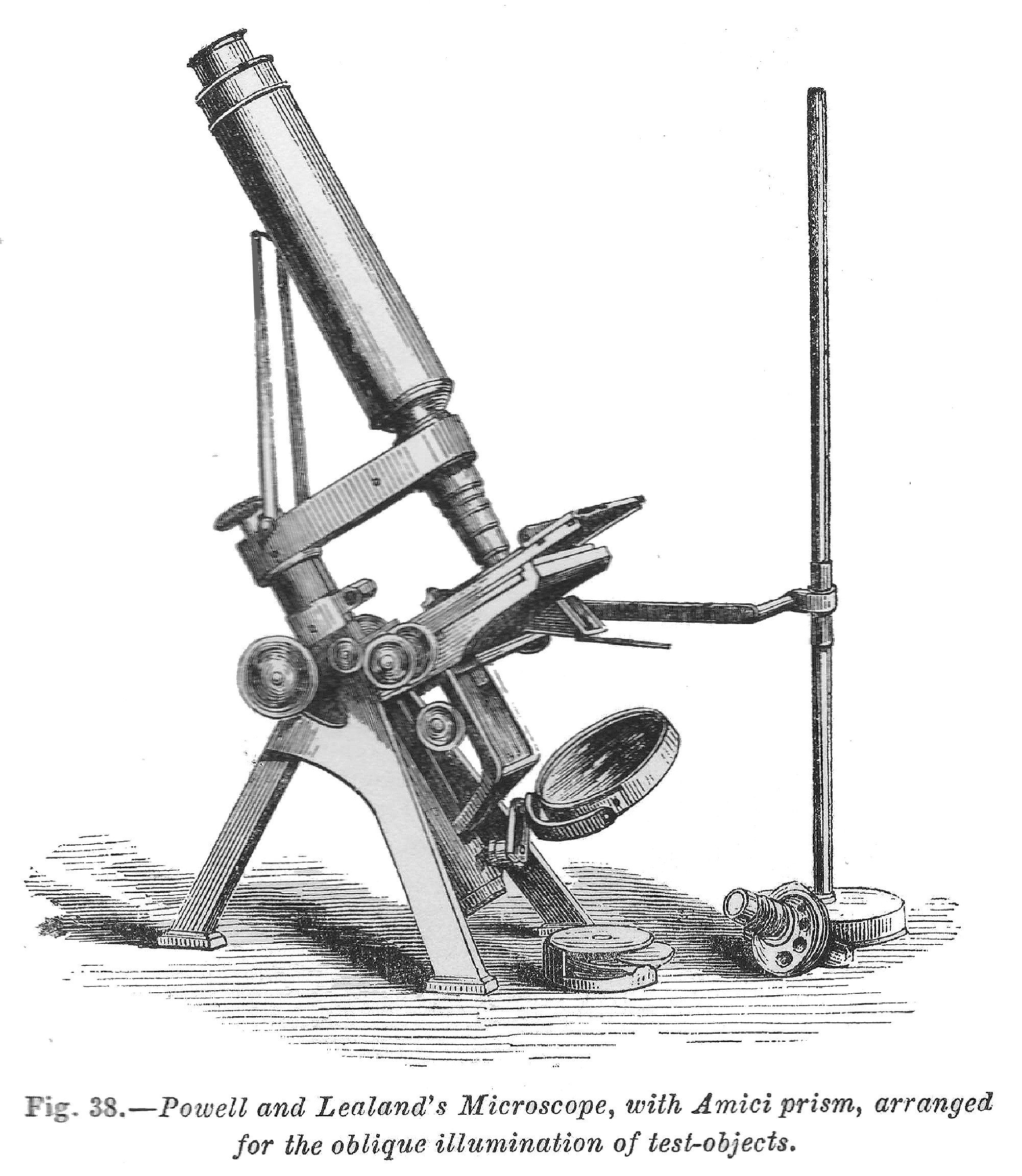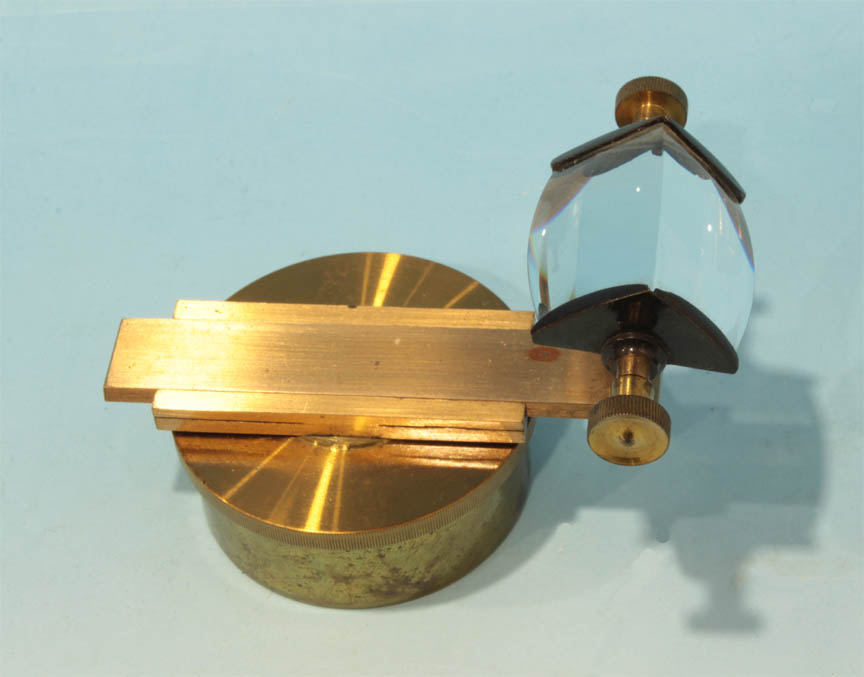MODEL: AMICI LENTICULAR ILLUMINATOR
DATE: c. 2nd Half 19TH C.
MAKER: Unsigned
DESCRIPTION: This illuminator stands on a telescoping stand similar to most common bench-type bullseye condensers. The stand has at its top a joint which carries a square fitting with a round opening. A knurled knob controls a screw which holds the rod supporting the illuminator at whatever distance away from the support is desired. The square fitting is held in an inclination joint permitting inclination in any angle desired. The Amici prism at the end has both a central more-flattened part and curves on either side. The prism is housed in a brass frame which covers its bottom. The prism itself may be rotated via a knurled knob.
HISTORY OF THE AMICI LENTICULAR ILLUMINATOR

 This illuminator was first popularized by Amici of Moderna, Italy. He regularly supplied it as an attachment integral to most of his microscopes. It has both straight and curved components which allow illumination both directly, and at the same time, obliquely. Shown in use under the stage of an 1856 Powell & Lealand microscope on the left, it was said that rotation of the stage combined with placement of the illuminator as shown could allow substantial improvement in resolution. Although this type of illuminator could be substage mounted, as in the type shown to the right, some users preferred the independently mounted version on its own stand to provide the greatest flexibility in exploring the appropriate degree of direct or oblique illumination for a given object of study.
Despite this, surviving examples of the freestanding version are less commonly seen than the substage version nowadays.
This illuminator was first popularized by Amici of Moderna, Italy. He regularly supplied it as an attachment integral to most of his microscopes. It has both straight and curved components which allow illumination both directly, and at the same time, obliquely. Shown in use under the stage of an 1856 Powell & Lealand microscope on the left, it was said that rotation of the stage combined with placement of the illuminator as shown could allow substantial improvement in resolution. Although this type of illuminator could be substage mounted, as in the type shown to the right, some users preferred the independently mounted version on its own stand to provide the greatest flexibility in exploring the appropriate degree of direct or oblique illumination for a given object of study.
Despite this, surviving examples of the freestanding version are less commonly seen than the substage version nowadays.

 This illuminator was first popularized by Amici of Moderna, Italy. He regularly supplied it as an attachment integral to most of his microscopes. It has both straight and curved components which allow illumination both directly, and at the same time, obliquely. Shown in use under the stage of an 1856 Powell & Lealand microscope on the left, it was said that rotation of the stage combined with placement of the illuminator as shown could allow substantial improvement in resolution. Although this type of illuminator could be substage mounted, as in the type shown to the right, some users preferred the independently mounted version on its own stand to provide the greatest flexibility in exploring the appropriate degree of direct or oblique illumination for a given object of study.
Despite this, surviving examples of the freestanding version are less commonly seen than the substage version nowadays.
This illuminator was first popularized by Amici of Moderna, Italy. He regularly supplied it as an attachment integral to most of his microscopes. It has both straight and curved components which allow illumination both directly, and at the same time, obliquely. Shown in use under the stage of an 1856 Powell & Lealand microscope on the left, it was said that rotation of the stage combined with placement of the illuminator as shown could allow substantial improvement in resolution. Although this type of illuminator could be substage mounted, as in the type shown to the right, some users preferred the independently mounted version on its own stand to provide the greatest flexibility in exploring the appropriate degree of direct or oblique illumination for a given object of study.
Despite this, surviving examples of the freestanding version are less commonly seen than the substage version nowadays.